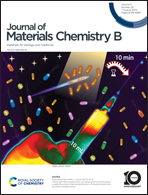Recent progress in nanozymes for the treatment of diabetic wounds
Abstract
The slow healing of diabetic wounds has seriously affected human health. Meanwhile, the open wounds are susceptible to bacterial infection. Clinical therapeutic methods such as antibiotic therapy, insulin treatment, and surgical debridement have made great achievements in the treatment of diabetic wounds. However, drug-resistant bacteria will develop after long-term use of antibiotics, resulting in decreased efficacy. To improve the therapeutic effect, increasing drug concentration is a common strategy in clinical practice, but it also brings serious side effects. In addition, hyperglycemia control or surgical debridement can easily bring negative effects to patients, such as hypoglycemia or damage of normal tissue. Therefore, it is essential to develop novel therapeutic strategies to effectively promote diabetic wound healing. In recent years, nanozyme-based diabetic wound therapeutic systems have received extensive attention because they possess the advantages of nanomaterials and natural enzymes. For example, nanozymes have the advantages of a small size and a high surface area to volume ratio, which can enhance the tissue penetration of nanozymes and increase the reactive active sites. Moreover, compared with natural enzymes, nanozymes have more stable catalytic activity, lower production cost, and stronger operability. In this review, we first reviewed the basic characteristics of diabetic wounds and then elaborated on the catalytic mechanism and action principle of different types of nanozymes in diabetic wounds from three aspects: controlling bacterial infection, controlling hyperglycemia, and relieving inflammation. Finally, the challenges, prospects and future implementation of nanozymes for diabetic wound healing are outlined.

- This article is part of the themed collections: Nanozymes and Journal of Materials Chemistry B Recent Review Articles


 Please wait while we load your content...
Please wait while we load your content...